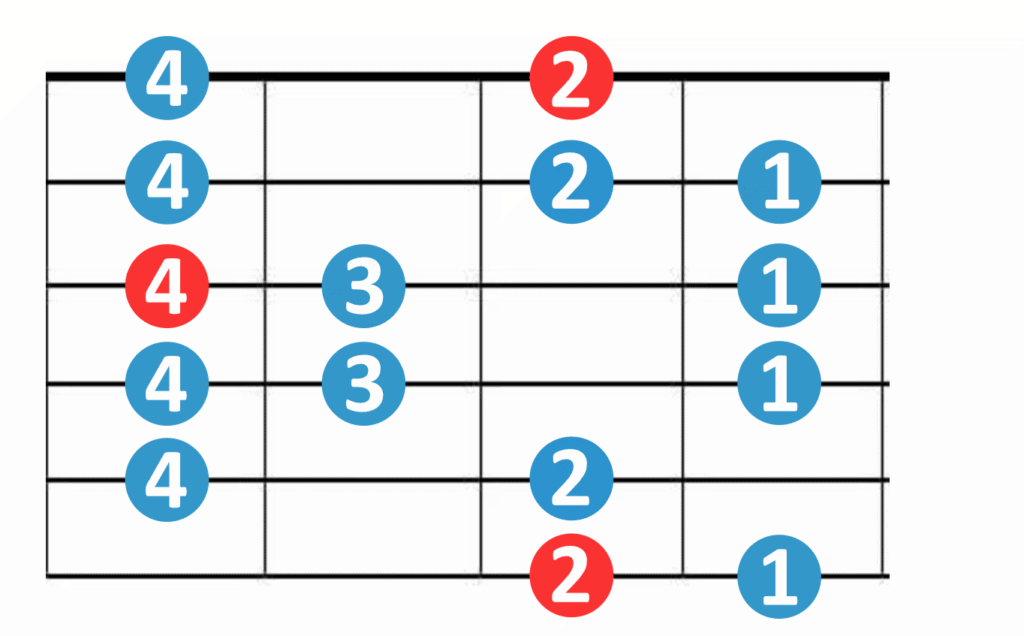All scales are built up of intervals, which are simply the distances between notes. When you put enough of these intervals together in the right order, you create a Major scale. Once you know the intervals of one Major scale, you know them all!
Major Scale Intervals
Let's use the key of C to keep things simple. People often use this key to teach because it's easy to look at and follow, there aren't any sharps or flats. Here's what the C Major scale looks like:
C-D-E-F-G-A-B-C
It starts and ends on C. Remember that our musical alphabet only goes to G, then starts over at A. Now, instead of using letters, you can number them. This will be really important later on. Here's what that looks like, starting with the C notes:
1-2-3-4-5-6-7-8 (or 1 again)
C is 1, D is 2, and so on. Keep the numbers in mind, we'll circle back to them.
Now that you have your notes, we can talk about distances between notes. Going from one fret to the very next is called a half step. Think about going from the 1st fret of a string to the 2nd fret. A whole step is 2 frets, like going from the 1st fret to the 3rd fret. Simple enough right? Now, the key formula to any Major scale is this:
Whole Step-Whole Step-Half Step-Whole Step-Whole Step-Whole Step-Half Step
Try playing along using just the 5th string. Start on the 3rd fret (C), then jump a whole step to the 5th fret (D), then another whole step to the 7th fret (E), then just a half step to the 8th fret (F), another whole step to the 10th fret (G), whole step to the 12th fret (A), one more whole step to the 14th fret (B) and finally a half step to the 15th fret (C octave).
- C to D - Whole Step
- D to E - Whole Step
- E to F - Half Step
- F to G - Whole Step
- G to A - Whole Step
- A to B - Whole Step
- B to C - Half Step
That's a very impractical way to play any scale, but it helps you visualize the whole and half steps.
And by the way, it's not just Major scales that you can do this with. Minor scales have different intervals, but those intervals are the same for all keys. Starting with the Major scale is the best way to learn all of the other scales, since they're all basically modifications of the Major scale.
We're using the C Major scale here because it's the easiest to understand and visualize. But the big takeaway is to connect your ears to the sound of the Major scale in general. After all, music is sound. Theory is just a way of understanding that sound.
Major Scale Shape On Guitar
Now let's look at a more practical way to play the Major scale. We'll use C Major again, but this is a moveable shape. We're playing a C Major scale because we're starting on C. If we moved this up one fret it could be the C# Major scale, and so on. This version starts on the 6th string.

Practice this going up (ascending) until you're feeling pretty good about it, then practice is going down (descending). Playing it in both directions is helpful in visualizing the fretboard. As always, take it slow at first and focus on technique rather than speed.
Listen as you play and try to hear the sound of a half step and a whole step.
Thanks for joining me today. I hope you found this lesson helpful. If there are more lessons you'd like to see leave me a comment below!
